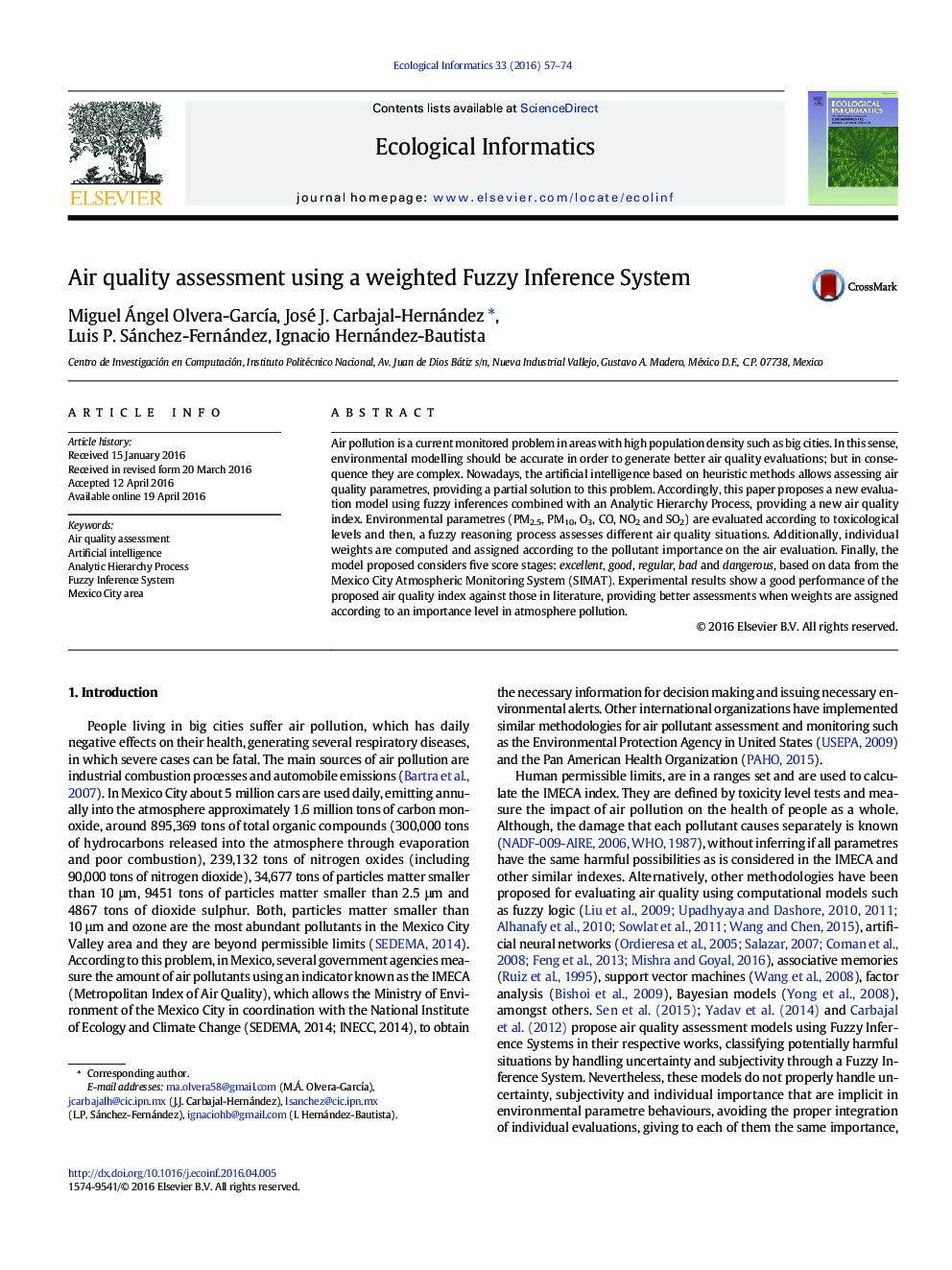| Article ID | Journal | Published Year | Pages | File Type |
|---|---|---|---|---|
| 4374783 | Ecological Informatics | 2016 | 18 Pages |
•Fuzzy Inference System was built to create an air quality index.•Air quality parameters are classified by levels according their ecological impact.•The weights of criteria were obtained by using an AHP.•Priorities are assigned to critical parameters generating an accurate assessment.•Comparison against most useful indices showed a good performance of the index.
Air pollution is a current monitored problem in areas with high population density such as big cities. In this sense, environmental modelling should be accurate in order to generate better air quality evaluations; but in consequence they are complex. Nowadays, the artificial intelligence based on heuristic methods allows assessing air quality parametres, providing a partial solution to this problem. Accordingly, this paper proposes a new evaluation model using fuzzy inferences combined with an Analytic Hierarchy Process, providing a new air quality index. Environmental parametres (PM2.5, PM10, O3, CO, NO2 and SO2) are evaluated according to toxicological levels and then, a fuzzy reasoning process assesses different air quality situations. Additionally, individual weights are computed and assigned according to the pollutant importance on the air evaluation. Finally, the model proposed considers five score stages: excellent, good, regular, bad and dangerous, based on data from the Mexico City Atmospheric Monitoring System (SIMAT). Experimental results show a good performance of the proposed air quality index against those in literature, providing better assessments when weights are assigned according to an importance level in atmosphere pollution.
